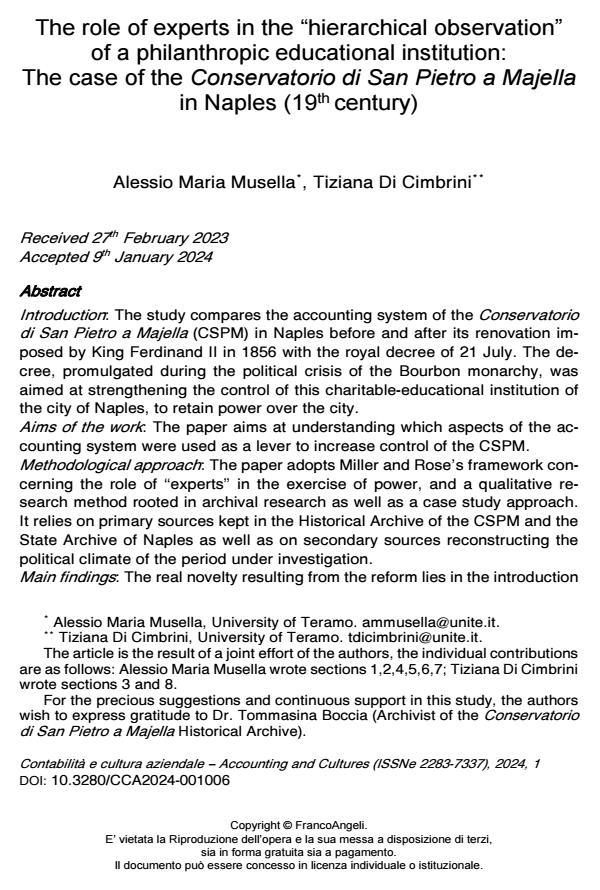The role of experts in the “hierarchical observation” of a philanthropic educational institution: The case of the Conservatorio di San Pietro a Majella in Naples (19th century)
Journal title CONTABILITÀ E CULTURA AZIENDALE
Author/s Alessio Maria Musella, Tiziana Di Cimbrini
Publishing Year 2024 Issue 2024/1
Language English Pages 30 P. 103-132 File size 450 KB
DOI 10.3280/CCA2024-001006
DOI is like a bar code for intellectual property: to have more infomation
click here
Below, you can see the article first page
If you want to buy this article in PDF format, you can do it, following the instructions to buy download credits

FrancoAngeli is member of Publishers International Linking Association, Inc (PILA), a not-for-profit association which run the CrossRef service enabling links to and from online scholarly content.
Introduction: The study compares the accounting system of the Conservatorio di San Pietro a Majella (CSPM) in Naples before and after its renovation imposed by King Ferdinand II in 1856 with the royal decree of 21 July. The decree, promulgated during the political crisis of the Bourbon monarchy, was aimed at strengthening the control of this charitable-educational institution of the city of Naples, to retain power over the city. Aims of the work: The paper aims at understanding which aspects of the accounting system were used as a lever to increase control of the CSPM. Methodological approach: The paper adopts Miller and Rose’s framework concerning the role of “experts” in the exercise of power, and a qualitative research method rooted in archival research as well as a case study approach. It relies on primary sources kept in the Historical Archive of the CSPM and the State Archive of Naples as well as on secondary sources reconstructing the political climate of the period under investigation. Main findings: The real novelty resulting from the reform lies in the introduction of experts into the apparatus of accounting surveillance on the CSPM, making the case study an example of the use of experts for control by political power.
Keywords: accounting, charities, performing arts, governmentality, nineteenth century, Italy.
Alessio Maria Musella, Tiziana Di Cimbrini, The role of experts in the “hierarchical observation” of a philanthropic educational institution: The case of the Conservatorio di San Pietro a Majella in Naples (19th century) in "CONTABILITÀ E CULTURA AZIENDALE" 1/2024, pp 103-132, DOI: 10.3280/CCA2024-001006